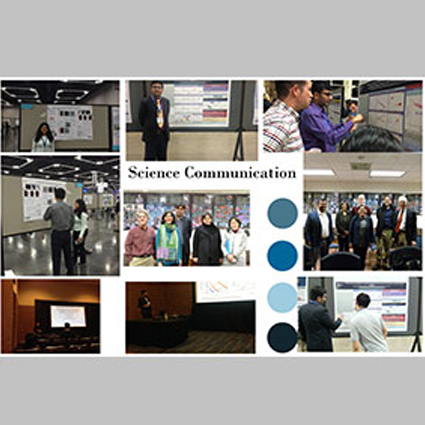The Art of Science Communication

The art of discussing one’s project in an interesting and thought-provoking way has become extremely important these days. Be it presenting in an international conference to a diverse audience, who may belong to the broad subject area of your work but may not be well versed with the details of your specific projects. It could be submitting an article for publication in prestigious, high impact journals, where the editor assigned to your paper may not be from the exact same area either (and often the editorial office makes the decision whether or not to send the paper out to review). Even while applying for grants/fellowships proposals, given that you may wish to change fields, or work in a related but different area, it is of utmost importance to effectively communicate your project results and their significance.
For starters, it would be wise to remember, when it comes to effective science communication, pictures do speak a thousand words. Be it theoretical, computational, or experimental work, clear images and illustrations do go a long way in capturing the audience’s attention. And, each image should be accompanied by captions which briefly describe the content, and possibly allude to the section in the paper where it is discussed in greater detail. It is also a good idea to capture the essence of the paper in a summary image (which can also be a schematic diagram), so that readers have an overview of what to expect from the study.
It is also crucial to present the background of your work in the introductory slides/first paragraphs of your conference presentation/paper. The purpose behind this is to give the audience an overview of the work already done in that field of work, and the existing challenges and opportunities. This will enable them to appreciate your work more, as they correlate it to the body of work that exists and understand your contribution towards the open questions. It is better to start from the basics. Something that feels simple to you just because you work/have been working in that field for quite some time, may not be obvious to your audience.
Be sure to articulate your challenges, and how you overcame them. Nobody starts to get results from Day 1, and your learning as you navigated the challenges, may prove to be valuable to your audience as well. It is also worth remembering if you did not accomplish everything that you set out to do in the project, it’s okay to explain the unexpected detours, and emphasize your key learning from each of those.
Lastly, make sure the Conclusion ties up all the pieces of the puzzle perfectly, just like the ending to a gripping novel, you should also aim to excite the audience. Do include future work that in your opinion, needs to be done either by you, or by your peers/colleagues, to carry the beacon forward.
Have fun with scientific storytelling!
© Dr. Arijita Mukherjee Chakraborty, PhD. Physics, Co-founder, Faculty and Mentor at Vector Educational and Consultancy Services
www.vectorideas.com
For more ideas on science communication/research presentation, please Contact Us at admin@vectorideas.com
